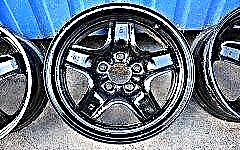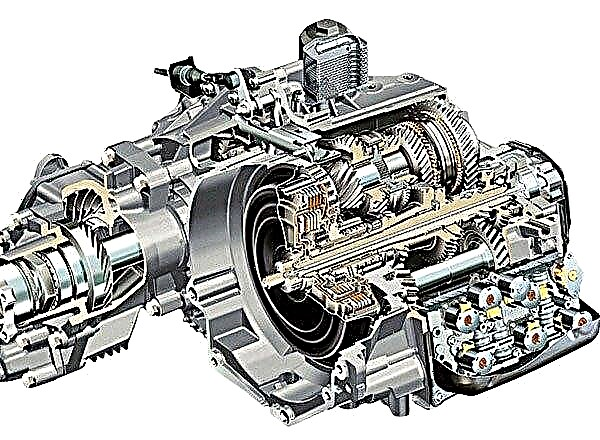

The content of the article:
- Germans or Japanese who are more reliable
- Features of Japanese automotive production
- Features of the German automotive industry
- How German and Japanese automakers are similar
Both German and Japanese car manufacturers export their products to almost all countries of the world, their brands are known everywhere, and car enthusiasts all over the world have accumulated vast experience in operating cars from both countries.
Disputes about the superiority of one school of automotive engineering over another often arise, even considering the similarities between them. What are the advantages and disadvantages of the German and Japanese car industry and which one is better?
"Germans" or "Japanese" - who is more reliable

First of all, it should be told why German and Japanese cars have become known around the world as the most reliable and high quality.
The reputation of the main German concerns as manufacturers of quality products dates back to the 60s and 70s of the twentieth century. At that time, Volkswagen and Mercedes-Benz cars showed the best results of consumer experience research and reliability tests, were in the first positions in the ratings according to the average indicators for the model range.
One of the most authoritative sources for research was Consumer Reports, published by the American Consumer Union. Its ratings were compiled on the basis of surveys of tens of thousands of drivers about their cars.
However, even then, Japanese companies shared the first positions with German ones in such reliability ratings - already in the 80s Nissan, Subaru, Toyota, Honda and Mazda were present there. By the end of the 90s, Mercedes and VW began to gradually lose their positions, giving way to their foreign competitors.
Among the reasons for the decline in quality, which the German car industry has been proud of for two decades, there were two main ones:
- The design of the car became more and more complex and computerized - new functions were added to their configuration, robotic gearboxes, an abundance of electronic devices, complex security systems, etc.
- Automakers began to gradually come to a more profitable business model for them, when the period of use of their product should not be 7-10 years, but an order of magnitude shorter, which stimulated a more frequent change of cars. In addition, the level of development and quality of industry in the South Asian region began to grow noticeably, while the cost of production was significantly lower than that in Europe. This, along with the complication of the technical part of the car, forced German manufacturers of mass models to partially switch to cheaper components and materials from Asia.
At the same time, Japan, in which production was initially much cheaper, began to significantly crowd out competitors in terms of reliability - all in the same rating from Consumer Reports for 2017, the first two places were taken by Toyota and Lexus, the third - by the Korean KIA and only then by Audi and BMW with 20 points out of 100 less than the leader. Of course, you should not rely entirely on the results of one study, and besides, this is a survey of 400,000 American drivers.
In the middle of 2017, a large Russian car sales service CarPrice conducted its own research on the reliability of used three-year-old cars in our market. 4 criteria were evaluated - body, technical condition, interior and related factorse.g. service intervals, warranty, etc. As a result, the highest marks were given to the brands Ford, Audi and Toyota, and with a slight lag, another 11 automakers, including Mercedes, Lexus and BMW.
Two years ago, J.D. Power, based on the collected statistical data, formulated 5 main myths about the quality of cars, among which were "Japanese cars are the most reliable" and "German cars have lost their reliability."
The agency, in particular, questioned the correct formulation of the question - individual models should be compared with competitors in their class, but not the automotive school. Both BMW, Mercedes and Porsche have far exceeded the market average in terms of reliability more than 8 times since 2000.
Features of Japanese automotive production

Despite the differences in the quality of products of individual companies, Japanese automakers are similar in approaches to organizing work in enterprises. Initially, in the second half of the 20th century, production was carried out using a technological base of a much smaller volume than that of Europeans, so cars were made simpler and more budgetary. Along with this, the conveyor never stopped, and work on quality and factory defects was often carried out after the release of the machine.
Ultimately, the lean approach to manufacturing led to the development of just-in-time at Toyota, which in turn led to significant cost savings and increased efficiency.
The system later began to rebuild processes in most Japanese industries, which had a positive impact on cost. That is, one of the main competitive advantages of automakers from Japan is the lower cost (compared to the "Germans") with wide functionality, high quality and reliability.
In addition, Japanese cars are more unpretentious to the harsh environmental conditions, which is important for Russia. The reasons for this are as follows:
- Engine... German cars are more often supplied to Russia with turbocharged engines, which are good in terms of fuel consumption and engine performance.
However, operation in subzero temperatures and poor fuel quality strongly affect the service life of such engines at a relatively high repair cost compared to atmospheric ones.
Nevertheless, the presence of supercharging does not necessarily reduce the engine's resource - with proper operation, it is not a serious disadvantage in terms of reliability and adaptability to a harsh environment.
- Suspension... The suspension stiffness on German cars is higher, adjusted for driving on high-speed European autobahns, to which a lower (on average) ground clearance is also added. Nevertheless, some of the German low-budget models were created taking into account the low quality of roads in the countries of sale.
- Transmission... Japanese "automatic machines" and "mechanics" are hardly better than those in Germany, where their production has been perfected for decades, and there is no doubt about the quality of engineering.
Doubts among motorists are sometimes caused by German "robots", which are more susceptible to Russian weather and road conditions.
Features of the German automotive industry

The strengths of the German car industry are usually related to extensive experience in the industry (the first car in the country was created back in 1886), a rich racing history, more premium brands and an emphasis on high indicators of power, speed, engine performance and other driving characteristics. ...
For all this, the buyer pays with a difference in cost, sometimes quite impressive - this applies to the price of the cars themselves, and, to a lesser extent, their service. With a similar level of quality and reliability, the general public (and Japan is no exception) perceives German cars as more premium and luxury, which, among other things, is inherent in the high cost. This is also due to the attention to detail, from the ergonomics in the cabin to every function in the multimedia menu.
The advantage of the "Germans" is often also sound insulation - Japanese mass cars rarely boast good insulation of wheel arches, unlike Audi or BMW.
Of course, here you can remember the comfort and premium quality of Lexus, but the importance of little things does not decrease in more budgetary German models, which cannot be said with certainty about the "Japanese".
Often, the advantages of German cars include a more pleasant design of both the interior and the exterior. Considering that this is a matter of taste for the owner, it is hardly necessary to confidently write this item into the pluses of the "Germans".
How German and Japanese automakers are similar

In addition to reliability and quality, to which a lot of the text above was devoted, there are others. traits common to both schools:
- Constancy... Today, both of them use a similar approach to updating the model range - from year to year behind a new model there are often only minor changes and improvements to the previous one. At the same time, truly new cars are rarely released, the current production is being improved and perfected.
- Perfection of production... In part, the point is related to the previous one - the ability to replicate their technologies in many industries and millions of cars produced allow buyers to be confident in their expectations from the purchase. Deviations from technical characteristics, inconsistency with the declared indicators, the risk of buying a low-quality copy - all this is insured by the constantly improving conveyor and production technologies.
Conclusion
Summing up, German cars have the advantage of better fit of parts, more thoughtful little things, which is due to the rich experience of production and the peculiarities of the mentality, in terms of quality and reliability, on average, they are not inferior to Japanese ones.
However, the Russian driver should take into account that the "Germans" are more often sharpened for European operating conditions, more humane to technology. At the same time, the "Japanese", more often perceived as less premium cars, are attractive for their cost with a comparable level of reliability and quality and better adaptability to the weather conditions in Russia.











